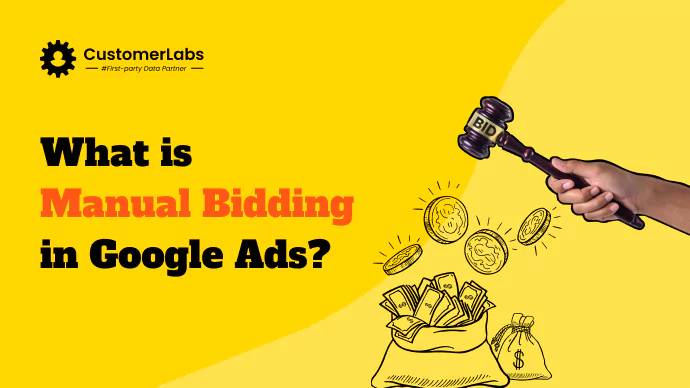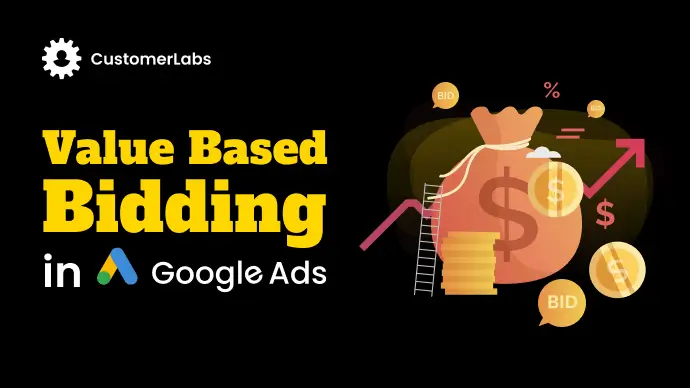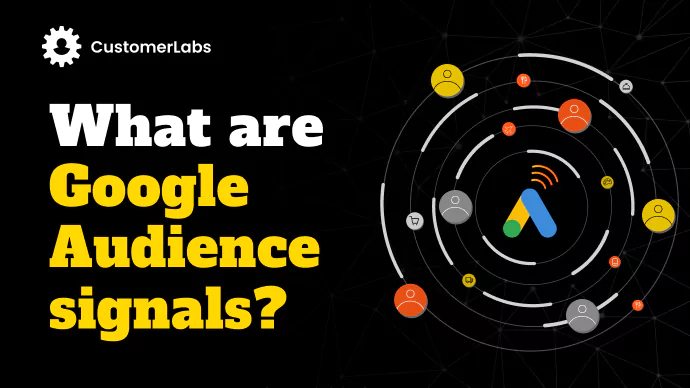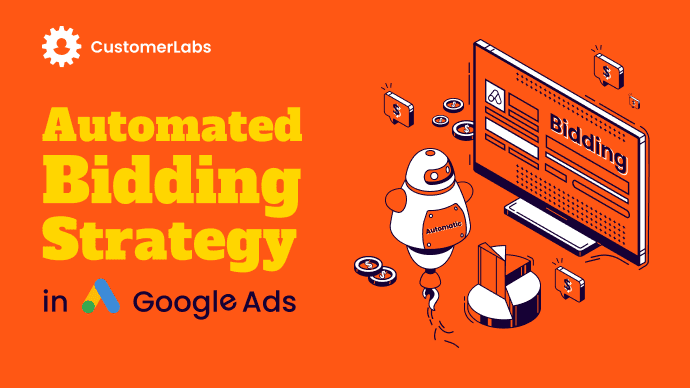
For years now, pro-level Google PPC marketers have relied on Manual Bidding in Google Ads. Today, manual bidding has become the most underrated bidding strategy and is considered a vanishing art in the automated world.
Let’s explore more about Manual Bidding, the possibilities it offers, and how you can leverage manual bidding to the fullest. Furthermore, let us also analyze and see if the rise of automation has led to a decrease in the usage of manual bidding, resulting in the death of manual bidding.
What is Manual Bidding in Google Ads?
Manual Bidding is a bidding strategy in Google Ads that lets advertisers have full control over bidding in Google Ads for their ad campaigns. With manual bidding in Google Ads, you can set the maximum cost per click (Max. CPC) for your ads. It is also called as manual cpc bid strategy in Google Ads.
You can manually make adjustments to the bid for
- Keywords,
- Audiences,
- Locations,
- Placements, and many more.
With Manual Bidding, you have the luxury of setting the maximum cost per click for a specific keyword, placement, or audience, or combination of all.
The only prerequisite for all types of bidding strategies in Google Ads is, you need to know what works and what does not work. Especially for manual bidding, you must know what bid adjustments to make and how much, to get your desired results.
If you aren’t sure what works for you, all you have to do is opt in for ‘maximize clicks’ bid strategy, which is a part of the automated bidding strategy in Google Ads.
How to Choose Manual Bidding Strategy in Google Ads?
Google Ads is moving towards automation and making things simpler for new advertisers every single day. In that move, it does not allow you to opt for manual bidding strategy while setting up the campaign. You have to setup the campaign choosing the campaign’s objectives and goals.
After you setup, click on campaign settings. There you will find an option that says “change bid strategy”. Click on it and instead of the recommended way, choose the not recommended option – Or, select a bid strategy directly (not recommended). Now, in the dropdown menu, the manual CPC bidding strategy will be activated.
Select the manual CPC under manual bid strategies and you will completely take control of your ad campaign for manual over-ride.
How does Manual Bidding work in Google Ads?
Basically, when you set up the campaign, you can fix the budget, objective, and bidding strategy at the ad campaign level.
Once you set up, this is how the bidding (auction) process works…
If you are bidding $3 for your ad, you will not ideally pay $3. You will be paying the bid amount that is just more than the second-highest bidder.
To better understand, let’s assume that there are four advertisers, A,B,C, and D, who are bidding $5, $4, $2, and $1, respectively. The Ad ranks of A, B, C, and D are 80, 50, 30, and 20, respectively. Now, if A’s ad is shown and the person clicks, A will be paying $4 instead of $5 (or an amount that’s necessarily required for it to rank above the second one).
See the below video for better understanding:
When to take control of the bidding?
After you set up the campaign, you wait and observe the metrics to analyze the data before you even decide to make any changes to the bid. Generally, marketers focus only on ROAS (Return on Ad Spend) and accordingly make bid adjustments manually.
But that is not the right way to adjust the bids when you go with manual bidding. It’s important to have a balance of a few other metrics before even thinking about adjusting the bids. Because it is not worth disturbing something that’s already performing well.
Below are the metrics to consider before manually adjusting your bid:
- ROAS
- POAS (Profit on Ad Spend)
- Impression share for top
- Impression share for the absolute top
However, if you still want to look at a leading indicator and then adjust the bid the old way, it is recommended that you:
- Increase your bid if your ROAS is higher than your target ROAS.
- Decrease your bid if your ROAS is less than your target ROAS.

How often should you make bid adjustments manually?
There is no proven study that tells you, “this is the day you should make adjustments to your bids”. However, it is suggested that you maintain consistency in making the bid adjustments.
Before moving on to the bid adjustment, consider certain factors, such as the analysis of previous data. It is because Ads or social media posts have different engagement rates on different days. This depends on the business type and other factors.
Analyze the full week’s data:
Even before you delve in to make bid adjustments, you have to analyze a full week’s data. Only after analyzing the data, you could conclude to adjust the bids.
Adjust on the same day, every week:
As mentioned above, analyze the entire data from, let’s say, Monday to Sunday. Now, based on this data, adjust the bid on Monday. Have every Monday as your bid adjustment day. If not Monday, some other day, but ensure to analyze the complete week’s data before you adjust the bid.
Consider your customers’ journey:
You should understand your customer journey and how many days it takes for the user to convert (decide to make a purchase). It varies from product to product and organization to organization. However, the most common durations are 7, 14, 28, 56, or 90 days. Use the one that suits you the most to analyze the data before you make the bid adjustment.
So, adjust the bids either weekly, fortnightly, or custom duration based on your business, data and other factors.
Caution: Before making the bid adjustment, ask yourself: why are you making the bid adjustment, what is the reason behind it, and based on what data did you infer to make this change?
Is daily bid adjustment recommended?
Never conclude your marketing strategy’s performance based on a single day’s results. Therefore, it is not recommended to make changes to your bid every single day. Having said that, there are days when you could consider making changes to your bid every day.
For example, during the BFCM sale, the Christmas season sale, or major remarkable events for your business, or if it is suddenly raining heavily and you are selling raincoats and sweaters, you can consider changing the bids every day.
Note: Ensure not to make it a regular practice to adjust your bids every day when going with a manual bidding strategy in Google Ads.
How much bid adjustment is the right adjustment?
There is no one size fits all. If you observe marketers, they just make a 5% increase or decrease. Sometimes it ranges between 15% and 50% bid adjustment. The ideal range would be a 15 – 30% change to the current bid (both positive [increase] and negative [decrease]).
Having said that, you must also notice that even a 30% change to the bid of $0.05 (5 cents) does not impact much. And the same 30% change to a $3 bid has a significant change. Another interesting thing is that if you have a bid value of $10 and you make a 30% change, the impact is not significant.
So, when going with very low and high bids, a little aggressiveness has to be shown in bid adjustments to see the impact for your manual bidding strategy in Google Ads.
Bid Adjustments: What to do and what not to do?
Although Google Ads allows you to adjust bids for device type, audience, location, day, gender, age, interaction (for video ad campaigns), ad schedule, etc., it is better you do not tweak every single thing. It is in your best interest to understand what is working and what is not.
Suppose you do a bid Adjustment of +20% (increase by 20%) for women aged 21 to 35, -10% (decrease by 10%) for desktop users, +30% (increase by 30%) for the audience, and +15% (increase by 15%) for mobile users. What’s the net end result?
It is pretty difficult to measure the impact. Now, if this is the case for a single ad campaign, imagine the work you might have across your ad account.
So, when going with manual bidding in Google Ads, do not adjust the bid for every factor. So what to do?
Adjust Bids only for Audiences & Devices:
To minimize the confusion and lack of clarity, play around with these two factors – audiences and devices. The prime reason for this recommendation is that these are the major factors that impact your ad campaign performance.
While choosing the audience, ensure to use first-party data to get the true measurement of the ad campaign performance.
It is because first-party data gives better audience signals to the ad algorithm to find relevant audiences and maximize your ad campaign performance.
Also have in mind that certain keywords resonate more with people of a certain age group. For example, the keyword ‘newborn baby toys’ resonates more with the age group 25 to 35 compared to other age groups. However, there are times when audiences have zero impact on how keywords convert.
So be cautious while making the bid adjustments.
Next, adjust the bids for device type because the user behavior varies on different devices and therefore the conversion rate also varies. For example, in the case of local ad campaigns, it is better to optimize for mobile devices.
There’s no hard and fast rule for what to adjust and what not to adjust when it comes to manual bidding in Google Ads. Sometimes it is more than enough to adjust the bid for some keywords, while other times it is not. Proper data on what keywords are converting and how they are converting matters the most. To understand this, robust conversion tracking must be incorporated.
Benefits of Manual Bidding in Google Ads:
With this bidding strategy, you have the liberty to tweak the algorithm as you want. You know that we must not increase the bid just because the ROAS was low for a couple of days. But if you give full liberty to the algorithm, it will reduce the bid as soon as ROAS drops, which is not what you want. Similarly, we have a few benefits of manual bidding, and they are:
- Manual bidding gives you full control over your budget and campaign.
- When you have a limited budget, you can still make your ad campaigns run better.
- Even when you have less data, you can make certain assumptions based on that data and move ahead to direct the ad algorithm in the right way manually.
- You can understand the market dynamics & volatility and think before you adjust the bids. Because the machine will quickly react to the rules set, like – a low ROAS for a day, reduce the bid, which is not a good practice. Therefore, manually you will have control over when to raise the bid and when to reduce it and when to do nothing
- With manual bidding, the changes take place immediately. Whereas with automated bidding, it takes time for the changes to kick into action.
- It is more efficient if you have more time to manage your campaigns.
Challenges with Manual Bidding in Google Ads:
Although manual cpc bid strategy has its own positives, it also brings with it some negatives, as below:
- Laborious work as we need to work around every single keyword and other parameters manually.
- With manual bidding, you will be limited in your ability to optimize the ad campaign because you cannot help the algorithm consider multiple factors into account to manage the bid adjustment.
- On a larger scale, it becomes very difficult to manually monitor and manage the ad campaigns at a granular level.
- Real-time optimization becomes nearly impossible for all the ad campaigns
- As things are done manually, they are prone to human error.
- You do not give the algorithm the flexibility to optimize the campaigns based on your overall ad account performance.
Rise of Automation: Death of Manual Bidding in Google Ads?
Google Ads has been evolving every single day since the beginning and stepping ahead towards automation. Starting with enhanced CPC(eCPC), to today’s Performance Max campaigns, bidding strategies have evolved from manual to automated to smart bidding strategies.
Google Ads has recently decided to end enhanced CPC by pushing advertisers who are using it to opt for tROAS or PMax. If you do not make any changes, then the existing eCPC bid strategy will operate like manual bidding, but not forever. The semi-automatic way of eCPC is no longer available starting October 2023.
It is evident that manual cpc bidding is here to stay for the rest of 2023. Moving forward into the phase of transition, into 2024-25 and thereafter, there are most likely chances that Google might end manual bidding.
But then many marketers still feel they do not want complete automated bidding.
However, it is only the future that is going to reveal reality. So, let’s wait and see.
What do you think? Will Google Ads stop manual bidding? What do you prefer: Manual Bidding or Automated Bidding? – Connect with me on LinkedIn to share your answer – Connect with Goutham Veerabathini on LinkedIn
Still Unsure of Which Bid Strategy (Manual or Automatic) To Use?
As opposed to the most common notion that automated bidding gives no control to the advertisers, it does give a certain level of control to the advertisers to tweak the algorithm for their benefit.
It is totally dependent on the marketers and advertisers to leverage the right weapon in the right way at the right time – be it Automated Bidding (and types of automated bidding) or Manual Bidding. It is the combo that works best most of the time.







